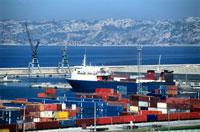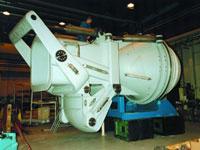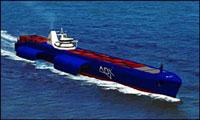Super-fast boats
The current merchant ships are very slow. Imagine! On average, they move a little faster than their friend who runs and need a week to cross the Atlantic. If it was a trip of pleasure, good, but being goods, always better faster. Until now there were inescapable technical impediments, but ships have been launched that are going to overcome them and that go from Europe to America in three days.

The most important factor that prevents merchant ships from taking a great speed is the “wave of captive”. The captive wave, as its name indicates, is a wave and is called captive because it forms the thrust of the boat and moves with it. That is, each boat has its own captive wave. To date, this unique wave has largely limited the development of merchant ships in terms of speed.
The captive swell is, in general, just like the swell produced by the wind, that is, it follows the same physical laws, but it is also closely related to the boat that has created it. For example, the larger the boat, the greater the wave; the speed of the wave will also depend on the size of the boat. Merchant ships are large and generate large captive waves.
Prisoner of the captive wave
While the wave goes ahead of the boat there are no problems, but if the boat exceeds the speed of the wave, there the comeries begin. The wave extends, increases and the pop of the boat sinks in the depths between the summits. Sinking the stern, the friction between the wave and the ship increases considerably and decreases the speed of the ship. This phenomenon causes modern merchant ships not to exceed 42 km/h.

The characteristics of the captive wave were described and analyzed by the naval architect William Froude in the XIX. In the twentieth century, and from 42 km/h, the friction of the captive wave becomes a drawback. This presumption is still in force today, as containers cannot function faster without wasting energy.
On the other hand, the propulsion of containers also imposes limitations on speed. For example, from a speed of 55 km/h (if ever reached) a cavitation occurs in the propeller, that is, cavities or gaps of air are created around the propeller blades. This causes dangerous vibrations and the container loses force of thrust.
This problem took place in the planes and was solved with reaction engines and change of design of the wings. In the case of freight ships, gas turbines and jet water engines are being developed to solve the problem of propellers. They are perfect to circulate at high speed, increasing efficiency with speed and not generating cavitation.
But improving the propulsion is not enough to overcome the captive wave, if the ships continue to drag the water. The boats need designs that allow them to cross the water or the wave.
Innovative designs Innovative designs

To overcome the speed milestone, several companies have presented innovative designs for merchant ships. British engineer Nigel Gee and the ADX Express consortium want to use the Pentamaran design to overcome the captive wave and put merchant ships at 70 km/h. The pentamaran ships will have 280 meters of length and capacity to transport 8,000 tons of goods. But the contribution of the Pentamaran ships is not in size, but in speed, since, as we have said, they will cross the Atlantic Ocean at 70 km/h.
The key to the mystery is in the packaging design, in its length and width ratio. The pentama containers will be longer and narrower than conventional ones, as will the Viking containers. Being the thinnest boat, they will produce less captive waves and, instead of pushing them, they will be able to cross the waves. In this way they can maintain high speeds. The keel of the first Pentamaran will be ready in 2003. In the beginning they will only do boats of goods, but they are already thinking about the ships of passengers and the ferries.
The fact that commercial containers so far are wide is due to their simplicity, in general, long and narrow containers are usually more unstable than large ones. To overcome the obstacle, engineer Nigel Gee has externally endowed Pentamaran with a special structure to be stable.

The company FastShip Atlantic, of Philadelphia, is following the same objective, but have addressed the problem of the captive wave on the other hand. Instead of building narrower ships, they have designed ships with a deep V-shaped bow and a flat stern of little depth. That is, the bass of the FastShip will be concave.
Thanks to this hydrodynamic design they manage to reduce considerably the friction of the captive waves. At high speed, an artificial top is formed in the stern that helps lift the rear end of the bowl to prevent pop from reaching the bottom. In this way they compensate for the friction effect of the captive wave. The artificial wave, moreover, will provide stability to the ship in conditions of rough sea and will not lose speed. The objective is, again, to build a merchant ship that circulates to 70 km/h within two years.
Published in 7k.
Buletina
Bidali zure helbide elektronikoa eta jaso asteroko buletina zure sarrera-ontzian











